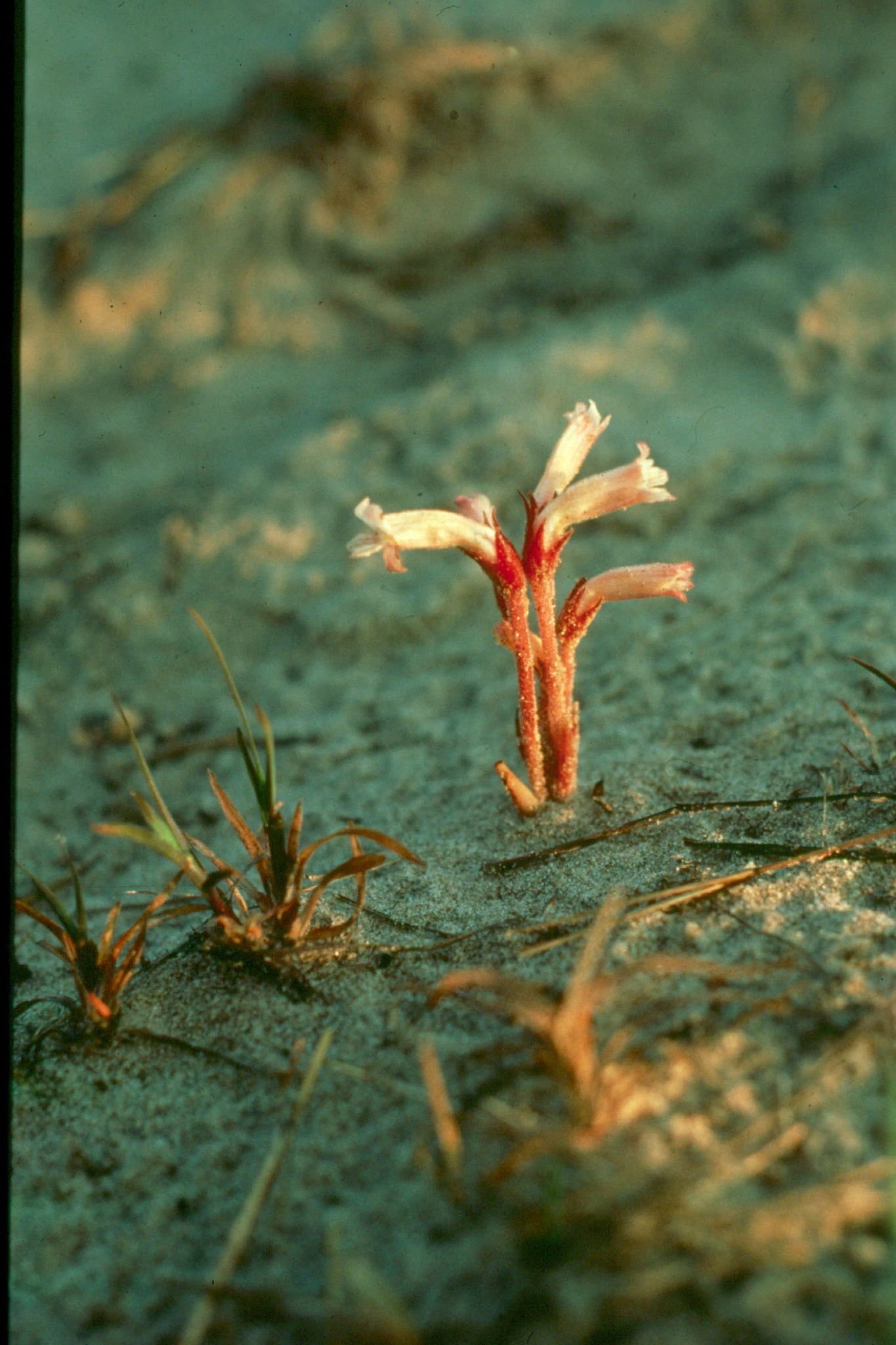Contact: Kevin Doyle, DNR Rare Plant Monitoring Program Coordinator
KevinF.Doyle@Wisconsin.gov or 608-416-3377
Rare Parasitic Plant Rediscovered In Dunes Over Lake Michigan
 A Rare Plant Monitoring Program volunteer on the dunes overlooking Lake Michigan in Manitowoc County rediscovered clustered broomrape, a rare parasitic plant that has not been seen in over 44 years.
Photo credit: Robbin Moran
A Rare Plant Monitoring Program volunteer on the dunes overlooking Lake Michigan in Manitowoc County rediscovered clustered broomrape, a rare parasitic plant that has not been seen in over 44 years.
Photo credit: Robbin Moran
MADISON, Wis. – The Wisconsin Department of Natural Resources (DNR) today announced that a population of a rare parasitic plant was rediscovered on the dunes overlooking Lake Michigan in Manitowoc County. A trained volunteer for the Rare Plant Monitoring Program spotted the clustered broomrape (Orobanche fasciculata), which has not been seen in over 44 years.
This discovery and others are featured in the Rare Plant Monitoring Program’s recently released 2022 Annual Report. Almost 15% of Wisconsin’s 2,366 native plant species are considered rare, meaning they are listed as endangered, threatened or of special concern.
More than 50 trained volunteers from around the state submitted over 220 reports of rare plants in 2022, including 42 populations in areas of Wisconsin where they have not been documented before.
“These new discoveries are very exciting. They help increase our understanding of the number and locations of rare plant species in Wisconsin so we can better monitor and protect them,” said Kevin Doyle, DNR Natural Heritage Conservation Botanist and Rare Plant Monitoring Program Coordinator. “Volunteers also revisit known locations, another important part of the conservation process. If we don’t check on these populations, we won’t know when they are in trouble.”
Since 2013, the DNR’s Rare Plant Monitoring Program has trained and sent volunteers to check on the health and size of rare native plant populations. The volunteer program is Wisconsin's largest source of rare plant data and is unique in the Midwest for its breadth of surveys statewide.
Become A Rare Plant Monitor
Rare Plant Monitoring Program volunteers are trained in surveying techniques, including how to accurately estimate large plant populations, assess habitat conditions and use GPS coordinates to locate and mark rare plant populations. Plant identification training is not provided. Learn how you can begin volunteering on the Rare Plant Monitoring Program webpage.

